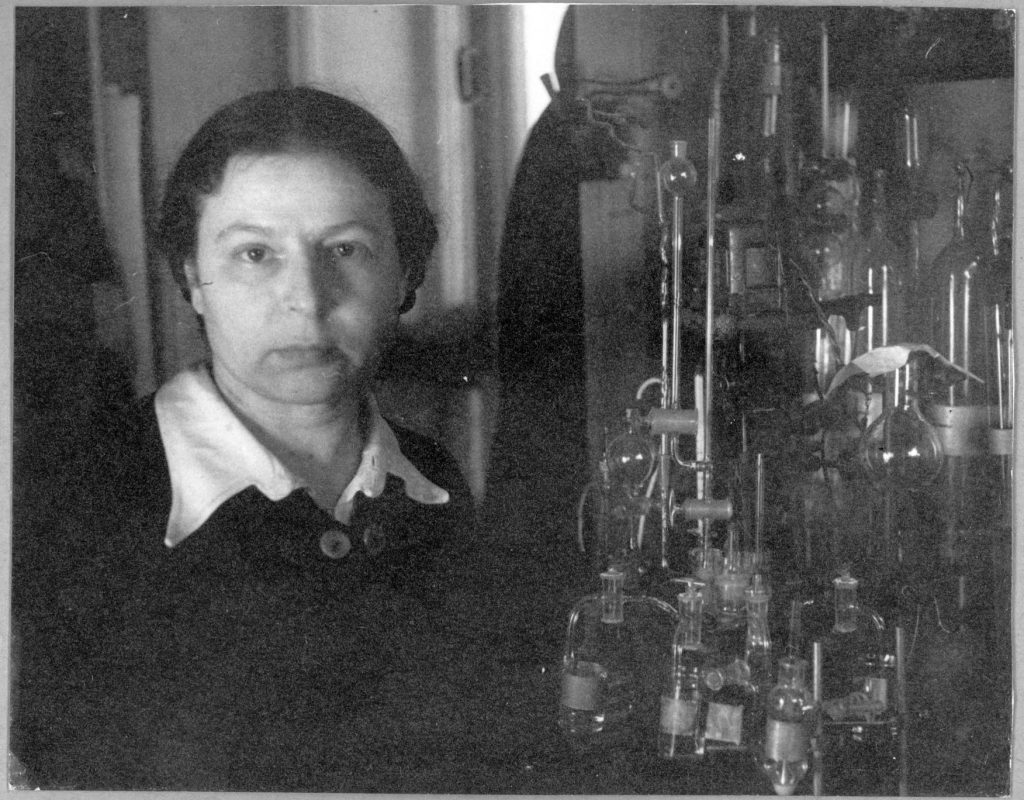First, we should mention electrochemistry people from Frumkin’s surrounding who continued in Karpov Institute in 1940s and later, when some part of the school moved to the Institute of Physical Chemistry. The first name to mention is that of P.M. Spiridonov. His 1941 laboratory fuel cell used the electrodes from nickel and carbon mixtures immobilized on iron metal, and delivered the 0.75 V voltage at 30 mA/cm2 current, as reported in the 1947 book of Dovtyan (p.38).
Yakov Mikhailovich Kolotyrkin (1910-1995) started his research work in Moscow University (1932-1937) after some ‘komsomol’ activities. He was affiliated with Karpov Inst starting from 1938. His PhD thesis (1942) combined the studies of metals dissolution and hydrogen evolution. His DSc thesis (1954) was named “Kinetics and mechanism of metals dissolution”.


Vladimir Ivanovich Veselovskyi (1907-1980) also spent some period for ‘komsomol’ and ‘party’ activities before studying in Moscow University (1929-1933). Then he became the PhD student in Karpov Inst in 1934, and completed his PhD thesis on the capacitance and adsorption properties of silver (1939). During this early period, he also served as a secretary in the Presidium of the Academy of Sciences (1937-1939). He pioneered photoelectrochemistry in the Institute (DSc thesis, 1949), and also studied radiation effects on electrochemical systems. Later he moved to electrocatalytic anodic processes on noble metals and their oxides. His experimental approaches involved isotope-based techniques.
These two organizationally active persons dominated electrochemistry research of Karpov Inst for several decades. In 1956, their separate labs were established. All the members of Frumkin school who remained in the Karpov Institute, and also newly involved electrochemists, were distributed between these labs.

Nina Aleksandrovna? Aladzhalova (1899-?)….graduated from Leningrad University? <Her publications are sometimes mixed with the articles of her younger namesake from neurophysiology.>
Tatyana Ivanovna Borisova entered Frumkin’s lab as PhD student in 1933. She worked with M.A. Proskurnin, then with B.V. Ershler (on the capacitance measurements on solid electrodes, her curves with the minima can be seen on the photo), then with V.I. Veselovskyi (this time on (photo)electrochemistry of germanium and silicon). <At MathNet, her publications are mistakenly mixed with the articles of her younger namesake from polymer science.>


Tat’yana Grigor’evna Lyapuntsova (1898-?) graduated from Moscow University in 1929. She was the PhD student in Karpov Institute until 1932 and later affiliated with Stepanov’s lab of technical electrochemistry. We do not know details of her further work, initially she was transferred to an applied institution with this lab in 1936, but later appeared in Frumkin’s surrounding again. Her only documented place of work (1968) is Research Institute “Cells-Electrocarbon” (which later became the Institute of Power Sources).
Alexander Andreevich Rakov (1909-1974) combined his classes in Moscow University with the work at chlorine plant. He completed this “evening education” in 1936 before being employed by Karpov Institute (in particular, as PhD student in 1938-1941). His diploma thesis supervised by N.A. Bach was devoted to conductivity of platinum aqueous sols. Then he was involved in the military defense work, and returned to academic research only in 1947. His PhD thesis (1947) addressed the effect of silver surface treatment on its adsorption and electrochemical properties. He continued in Veselovskyi’s lab.


Kseniya Iosifovna (Keynya Ioselevna) Rozental’ (1913-1965) was a graduate of Moscow University (1937) who spent all her later life in Karpov Institute. Her PhD topic was the kinetics of ionization and discharge of heavy hydrogen on platinum (1944 thesis is mentioned in her delayed publication with Dolin and Ershler). She continued with Veselovskyi later.
Nina Yanovna Bune (1921-1987) entered Moscow University in 1939. During the period of evacuation during WWII, she moved first to Ural’sk, and then to Sverdlovsk (Ekaterinburg) where it was possible to continue her classes. She graduated in 1945 and started her PhD in Karpov Inst, where she was later employed in 1949 and worked with Kolotyrkin. Her 1953 PhD thesis addressed the effect of anions on the hydrogen evolution on lead electrode. She studied various topics, her last cycle of articles addressed ruthenium-titanum oxide gas-evolving anodes.

Lidiya Andrianovna Medvedeva (1918-2008) first appeared in Karpov Inst as the technician in 1935. Her attempt to start high education was interrupted by WWII, and she left for Tashkent with the Institute in 1941. Then she entered Moscow Univ in 1943, graduated in 1948 (her supervisor was Z.A. Iofa, they studied Fe passivity in concentrated acids), and was employed by Karpov Inst since 1949. She studied hydrogen evolution on cadmium, and dissolution of metals as affected by anions (this was the topic of her 1956 PhD thesis). She worked with Kolotyrkin.
Tsetsiliya [Tsilya] Iosifovna Zalkind (1922-1995?) was the 1944 graduate of Moscow University, and then the PhD student at Karpov Inst. After her PhD thesis on the anodic oxidation of platinum (1948) she continued with Veselovskyi, studying electrochemistry of noble metals under irradiation, and also participated in Kolotyrkin’s corrosion activities.
Vladimir Vasil’evich Losev (1917-1997) graduated from Moscow University in 1941. From his article with Z.A. Iofa, we can judge that his diploma study addressed polarographic maximums. He spent all the war period in the army, then became a PhD student in the Institute of physical chemistry, and worked with B.N. Kabanov on iron dissolution in hot concentrated alkaline solutions (1951 thesis). After some period in the Institute of Scientific and Technical Information, he joined Karpov Inst in 1957, and became a leading researcher in the field of metal dissolution kinetics. His experiments combined radiotracer analysis (pioneered by B.V. Ershler) and electrochemical techniques, allowing to discover the elementary steps of these complex reactions.
Aleksandr Nikolaevich Chemodanov (1929-?) is also well known for radiotracer applications in materials dissolution. He graduated from Moscow University in 1952, was a PhD student in Karpov Institute until 1956, and continued to work with Kolotyrkin. His PhD thesis on platinum dissolution in acids was defended only in 1970.
Galina Matveyevna Florianovich (1924-2004)